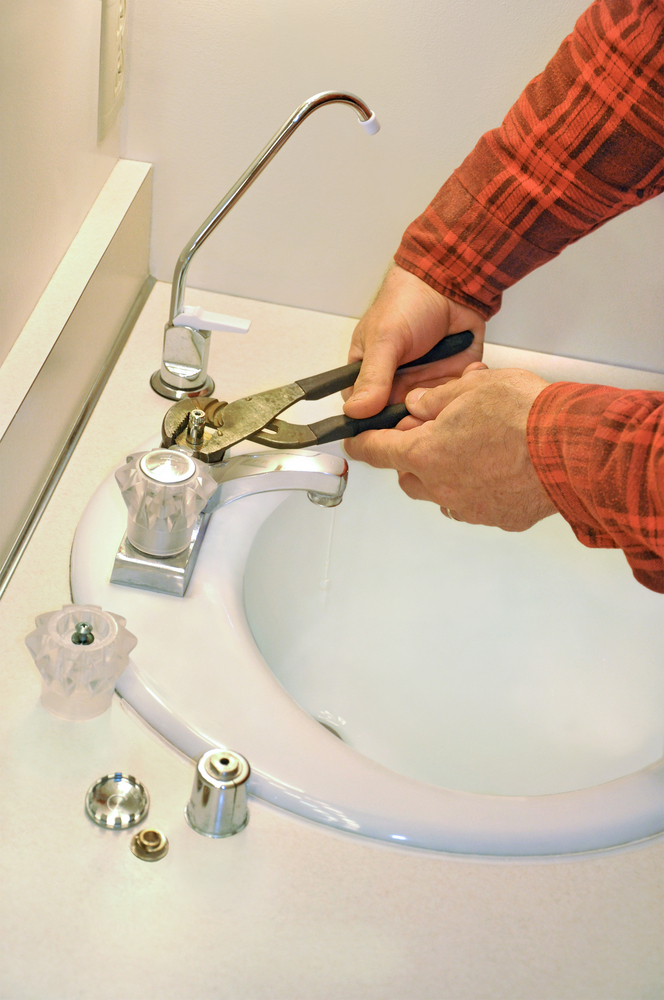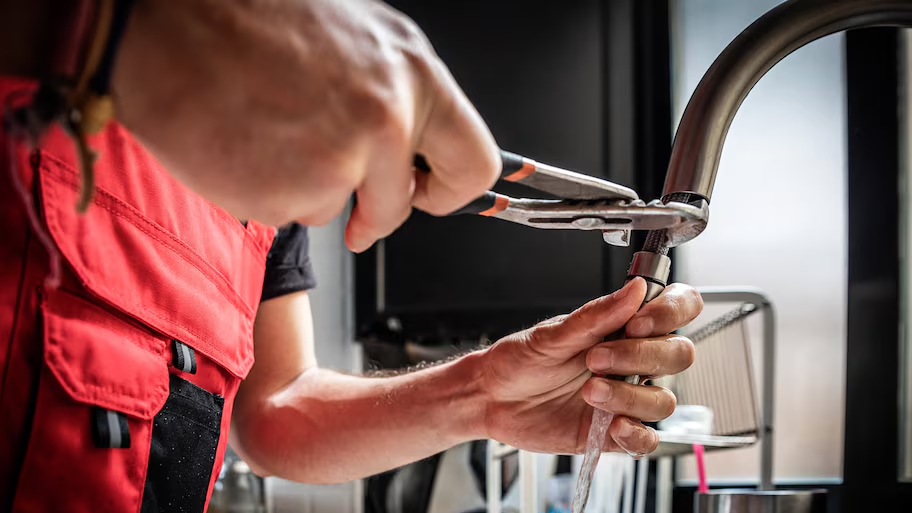Almost everyone may have their unique thinking in relation to What Causes Leaky Faucets & How To Fix Them.

Dripping taps could look like a small inconvenience, but their effect surpasses simply the annoyance of the sound. From wasting water to incurring unnecessary financial costs and health and wellness threats, overlooking a dripping tap can cause numerous consequences. In this article, we'll explore why it's crucial to address this usual family problem promptly and properly.
Wastefulness of Water
Ecological Impact
Trickling taps contribute significantly to water wastefulness. According to the Environmental Protection Agency (EPA), a single tap dripping at one drip per secondly can squander greater than 3,000 gallons of water annually. This not just stress water resources yet likewise influences environments and wild animals dependent on them.
Financial Expenses
Increased Water Expenses
Past the ecological impact, dripping faucets can pump up water costs substantially. The built up waste with time translates into higher utility costs, which can have been avoided with prompt repair work.
Possible Home Damage
Furthermore, extended leaking can result in damage to fixtures and surface areas bordering the tap. Water accumulation can trigger staining, deterioration, and also structural concerns if left neglected, leading to additional repair work costs.
Wellness Worries
Mold and Mold Growth
The continuous visibility of wetness from a dripping faucet develops an excellent atmosphere for mold and mildew and mildew development. These fungi not just jeopardize indoor air top quality but likewise posture health dangers, specifically for individuals with breathing problems or allergic reactions.
Waterborne Conditions
Stationary water in trickling faucets can become a breeding ground for bacteria and other pathogens, enhancing the danger of waterborne illness. Pollutants such as Legionella germs flourish in stagnant water, potentially resulting in major diseases when ingested or inhaled.
Do it yourself vs. Expert Repair work
Advantages and disadvantages of DIY Repair
While some might try to repair a dripping tap themselves, DIY fixings include their very own set of obstacles. Without appropriate knowledge and devices, DIY attempts can exacerbate the problem or lead to incomplete fixings, prolonging the problem.
Advantages of Working With a Professional Plumber
Working with a specialist plumber guarantees that the underlying root cause of the trickling tap is dealt with successfully. Plumbing professionals possess the expertise and equipment to detect and fix tap problems efficiently, saving time and lessening the danger of additional damages.
Step-by-Step Guide to Taking Care Of a Dripping Faucet
Tools Required
Prior to trying to take care of a leaking faucet, gather the essential devices, including an adjustable wrench, screwdrivers, substitute components (such as washers or cartridges), and plumber's tape.
Usual Faucet Issues and Their Solutions
Identify the sort of faucet and the details problem creating the drip. Typical problems include worn-out washing machines, corroded shutoff seats, or faulty O-rings. Refer to supplier guidelines or on the internet tutorials for detailed support on repairs.
Safety nets
Regular Upkeep Tips
To stop leaking faucets, execute routine upkeep such as cleaning up aerators, evaluating for leakages, and changing damaged components promptly. In addition, take into consideration installing water-saving gadgets or updating to more reliable components.
Significance of Prompt Fixes
Resolving leaking faucets as soon as they're noticed prevents more water wastefulness and possible damage, inevitably saving both water and cash over time.
Effect On Building Worth
Perception of Well-Maintained Building
Preserving a residential property in good condition, including addressing maintenance concerns like dripping faucets, boosts its perceived worth and worth amongst potential purchasers or occupants.
Impact on Resale Value
Residences with properly maintained plumbing fixtures, including faucets, command higher resale worths in the realty market. Resolving dripping faucets can contribute to a positive impression during building assessments and arrangements.
Ecological Duty
Private Contribution to Conservation
Taking duty for dealing with trickling faucets aligns with more comprehensive efforts toward water preservation and environmental sustainability. Every person's activities collectively make a substantial effect on preserving priceless resources.
Lasting Living Practices
By prioritizing timely repairs and taking on water-saving practices, people contribute to sustainable living techniques that benefit both present and future generations.
Conclusion
Resolving a dripping faucet surpasses mere benefit; it's a crucial step toward saving water, minimizing economic prices, and safeguarding health and home. Whether with do it yourself fixings or expert support, doing something about it to repair leaking faucets is a small yet impactful way to promote liable stewardship of resources and contribute to a much healthier, extra lasting future.
How to Fix a Leaky Faucet: Step-by-Step Repair Guide
A leaky faucet may seem like a simple annoyance, but if it's not fixed promptly, that leak could cost hundreds to potentially thousands. From water damage to mold, mildew, and high water bills, even a tiny leak can be catastrophic if left unattended. Damage like this can even affect the overall value of your home, so it's important to take the right approach for leaky faucet repair. You may need the help of a plumber in some cases, but we've got a few tips you can try on how to fix a leaky faucet before calling the pros.
Four Faucet Types
When you're learning how to fix a leaky faucet, the first step is knowing what kind of faucet you're working with! There are four common types.
Cartridge Faucets
Cartridge faucets come in one- or two-handled varieties. In one-handled cartridge faucets, hot and cold water combines in a single cartridge. In the two-handled versions, hot and cold water are controlled separately and mixed in the faucet.
Ball Faucets
Ball faucets have a single lever you push up and down to adjust the pressure and rotate to change the temperature. A slotted metal ball controls the amount of water allowed into the spout.
Compression Washer Faucets
They're the oldest type of faucet, but they're still used in many homes — especially older ones. Compression faucets have two separate handles that, when turned, raise or lower the washer that seals a water valve. This valve stops water from flowing through the faucet when it is turned off.
Disc Faucets
Disc faucets rarely need to be repaired due to their maintenance-free design. The water flow is controlled by two discs — the upper one raises and lowers against a fixed lower disc, creating a watertight seal. If your disc faucet starts leaking, you may need to replace the seals or clean residue buildup from the inlets.
Fixing a Leaky Faucet
Step 1: Turn Off the Water
Whether you're learning how to fix a leaky bathtub faucet or how to fix a leaky kitchen faucet, always turn off the water supply to your working area when you're fixing a leak. The last thing you want is a flood added to your list of things to fix.
Look for the shutoff valves below your sink or around the tub and turn them clockwise to stop the water flow. If your faucet doesn't have shutoff valves, you may need to turn off the water for the whole house. Check to make sure it's off by turning the faucet on. If nothing comes out, you're ready to start the repair.
Step 2: Take Apart the Faucet
How you disassemble your faucet depends on the type of fixture you have. You can use a flathead screwdriver to remove the caps on top of the handle or handles for cartridge and compression faucets. Inside, you should see handle screws. Unscrew these with a screwdriver to remove the handle.
Disc- and ball-style faucets will typically have an inlet screw near the handle, and removing that will reveal the interior of the faucet.
Detach the Valve Stem
For cartridge- and compression-style faucets, you'll see the inner valve stem or cartridge once you remove the faucet handles. If you have a compression faucet, unscrew the brass valve stem. If you have a cartridge faucet, pull out the cartridge. If your cartridge has been in place for a while, it may require some tools or extra force to remove it due to mineral deposits.
Examine and Replace Parts
Once you've removed the parts, check them out to confirm what needs to be replaced. You may see corroded rubber washers, O-rings, stems, or cartridges. On a ball-style faucet, check the seats and springs for damage.
If you need to repair a leaky disc faucet, check the inlet and seals on the lower disc.
Once you determine what parts must be replaced, visit your local hardware store. Bring the damaged parts with you to ensure you can purchase the correct components to replace them.
Clean Valves and Faucet Cavity
If you've removed a stem or cartridge, you may notice mineral buildup in the faucet's threads. Use white vinegar to clean the valve seat by soaking it for a few minutes, then scrub it away with a soft toothbrush and rinse with warm water. You can also clean the interior of the faucet in the same way.
Reassemble the Faucet
Once your faucet is cleaned and the required parts have been replaced, it's time to reassemble it. Put the pieces back together and slowly turn the water supply back on. Doing this slowly is crucial because too much initial water pressure can damage the new hardware you've just installed.
https://homewarranty.firstam.com/blog/how-to-fix-leaky-faucet

I was brought to that write-up on 4 Common Reasons for a Leaky Faucet through an associate on another web page. Sharing is nice. Who knows, you may be helping someone out. Thanks a lot for being here. Please come visit our blog back soon.